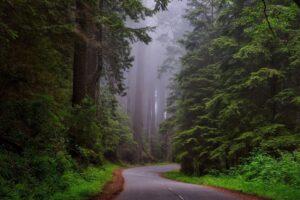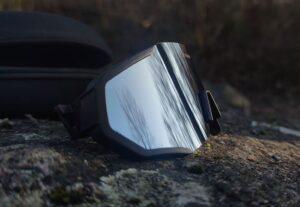If you’ve ever felt the exhilaration of setting up camp amidst the untamed beauty of bear country, you know there’s nothing quite like the thrill of nature’s embrace. But with that thrill comes responsibility – a dance between awe and caution. In our new guide, we’re diving deep into the art of staying safe while camping in bear country.
From deciphering bear behavior to mastering essential safety measures, we’re arming you with the knowledge to navigate this enchanting realm with confidence. So, grab your hiking boots and a keen sense of curiosity as we embark on a journey to discover the secrets of harmonious coexistence with these majestic creatures.
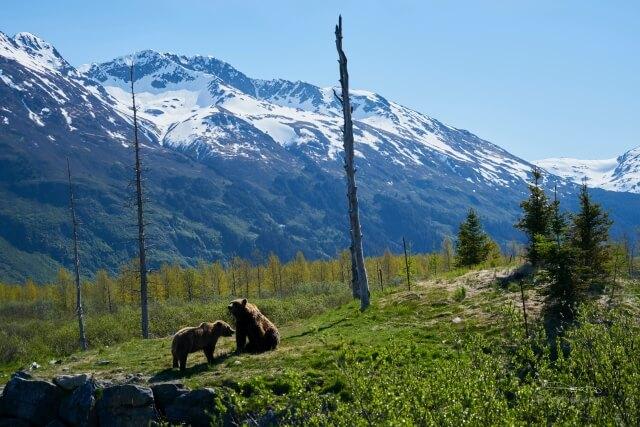
Are you ready to unlock the code to safe and awe-inspiring adventures in bear country?
Camping in Bear Country: Exciting and Challenging
Camping in bear country is a thrilling expedition that adds an extra layer of excitement to your outdoor escapades. The mere possibility of encountering these magnificent creatures in their natural habitat can send a rush of adrenaline through your veins.
Yet, it also comes with its own set of challenges – a captivating blend of anticipation and caution. The wilderness becomes your playground, and as you pitch your tent amidst towering trees and pristine landscapes, you become part of a delicate ecosystem where humans and bears coexist. In this dynamic realm, mastering the art of safe camping becomes a skill worth honing.
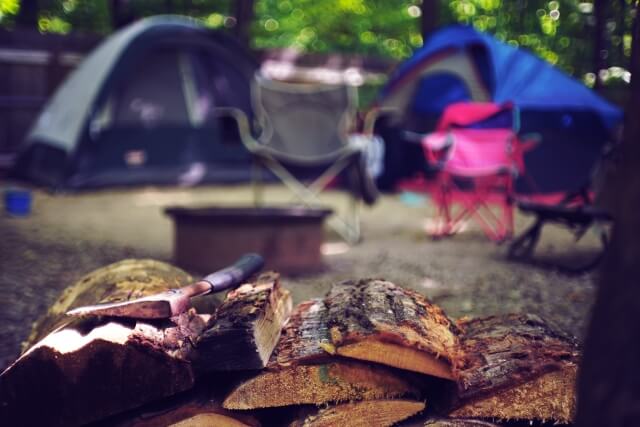
Know the Bear Species in the Area
Different Bear Species
Know the bear species in the area – it’s like unlocking chapters in a captivating story of biodiversity. When camping in bear country, understanding the different bear species that call it home is your compass to a safer and more informed adventure.
Grizzly bears, with their awe-inspiring presence, and black bears, known for their adaptability, each have their unique traits and behaviors. Grizzlies might command attention with their immense size and power, while black bears, despite their name, can showcase a variety of coat colors.
Recognizing these distinctions is like learning the cast of characters in a play – it empowers you to read the script and respond accordingly. By delving into the world of bear species, you’re not just a camper – you’re an avid student of the wild, equipped with knowledge that enhances your experience and ensures a harmonious coexistence with these remarkable inhabitants.
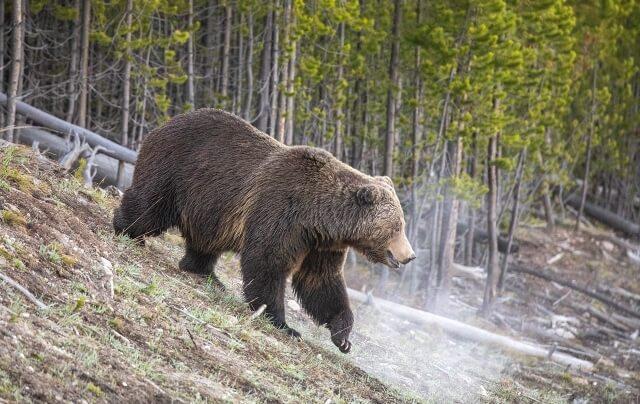
Behaviors and Habitats
Understanding bear behaviors and habitats is like deciphering a secret code that unlocks the mysteries of their world. When you venture into a bear country, it’s crucial to be well-versed in their habits. Knowing that bears are omnivores – feasting on both plants and animals – is like knowing the menu of a restaurant you’re about to dine in.
Their habitats range from lush forests to alpine meadows, and even coastal areas. It’s like knowing the different settings of a grand story. Recognizing signs of bear activity, like tracks or scat, is like reading the footprints left behind in an ancient civilization. When you grasp these nuances, you become a perceptive observer of the bear’s rhythm – predicting their movements, understanding their needs, and avoiding their paths.
By immersing yourself in their behaviors and habitats, you’re not just a camper – you’re a nature detective, connecting the dots and ensuring a safe and awe-inspiring experience in the heart of the bear country.
Know What to Do in a Bear Encounter
Different bear behaviors: Defensive and Predatory
Knowing what to do in a bear encounter is crucial for your wild adventure. Defensive behaviors, like huffing or swatting, signal caution. Predatory behaviors, like stalking, demand standing your ground. Understanding these cues is like learning a new language – a silent conversation with bears. By arming yourself with this knowledge, you’re not just a camper – you’re a poised actor on the wilderness stage, ensuring safe and respectful encounters with these magnificent creatures.
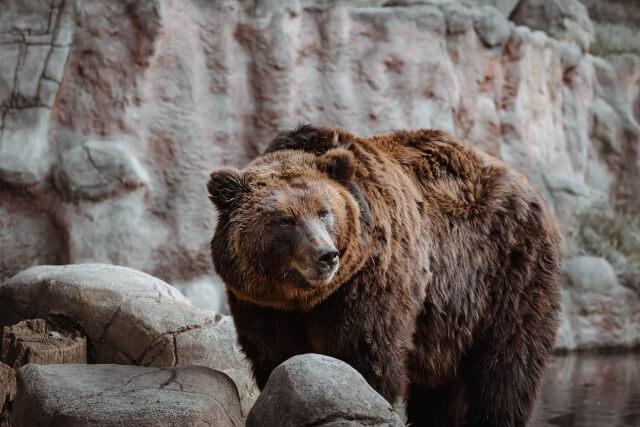
Reacting appropriately: Step-by-step actions in a bear encounter
Reacting appropriately in a bear encounter is important. If a bear displays defensive behaviors, stay calm and avoid direct eye contact. Speak gently, and slowly back away without turning your back. It’s like taking careful steps on a delicate stage. In the case of predatory behaviors, hold your ground, stand tall, and use bear spray if you have it – it’s like a shield that speaks the bear’s language. Slowly retreat while keeping your eyes on the bear.
These steps are like mastering a routine, ensuring you respond in harmony with the bear’s cues. By following this dance, you’re not just a spectator – you’re an active participant, sharing the wild’s spotlight while keeping both you and the bear safe.
Using Bear Spray
How it works and its effectiveness
Using a bear spray is like wielding a powerful spell in your wilderness arsenal. This pressurized spray contains capsaicin – a compound that sends a clear message to bears: “Back off!” When faced with an approaching bear, keep your distance and aim the spray downward, creating a foggy barrier between you and the bear. It’s like summoning a protective shield.
Bear spray’s effectiveness is well-documented, often deterring bears and providing a vital line of defense. Think of it as your secret weapon, designed to diffuse potentially dangerous encounters. By mastering the art of bear spray, you’re not just a camper – you’re a protector, ensuring your safety and minimizing harm while respecting the majestic creatures that share the wilderness with you.
Weather Considerations
Bear behavior in different weather conditions
Weather considerations play a crucial role in understanding bear behavior, like deciphering the moods of nature itself. When the skies are clear and the sun bathes the landscape, bears might be more active, foraging and exploring. It’s like watching them come alive on a sunny stage.
During rainy weather, bears might seek shelter or hunker down, much like seeking refuge from the rain yourself. Think of it as a shared experience – you both navigate the elements for comfort.
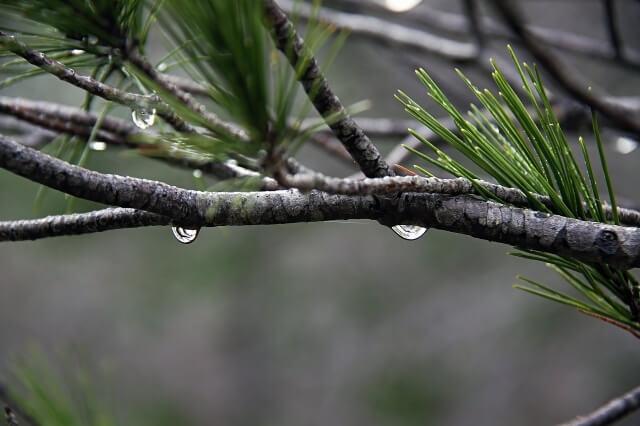
In colder months, bears enter a state of dormancy, their version of a long winter’s nap. It’s like observing their hibernation as a hushed act in nature’s theater. By tuning into these weather-driven shifts, you’re not just a camper – you’re a meteorologist of bear behavior, attuned to the rhythms of the wild and adapting your steps accordingly for a safer and more enriching experience in bear country.
How to adapt to changing weather
In a bear country, weather shifts demand adaptability. Layer clothing, and swiftly add rain gear when needed. Embracing changing weather ensures your camping experience harmonizes with the wild. Let nature’s cues guide you, and revel in the dance of adaptation in this immersive environment.
Choosing the Right Campsite
Find a Bear-Friendly Campground
Adapting to changing weather is like fine-tuning your dance moves in the wilderness. As nature’s rhythm shifts, you adjust your steps. When raindrops fall, don your rain gear – it’s like joining a synchronized rain dance with the forest.
In the heat of the day, seek shade – a natural break to catch your breath. It’s like finding a cool spot on the dance floor. And as temperatures drop, layer up – it’s like adding graceful movements to your routine.
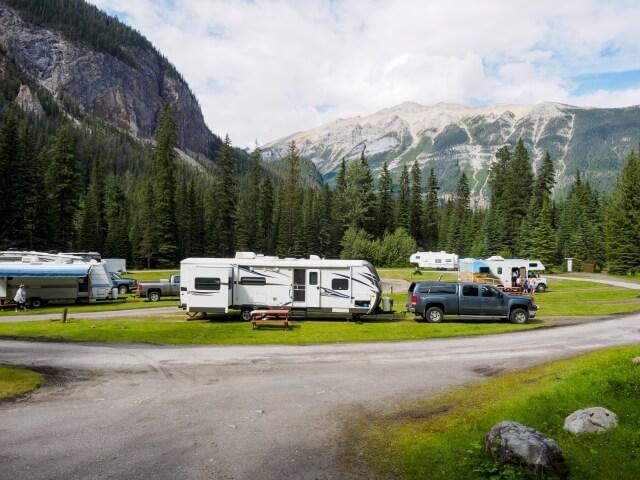
Adapting to changing weather is like being in tune with the music of the wild – responding to each note, embracing the shifts, and ensuring you’re ready for any climatic improvisation. By mastering this, you’re not just a camper – you’re a versatile performer, embracing nature’s symphony with finesse and flair, even as the weather takes its curtain call.
Factors to consider
The terrain is your backdrop – whether it’s dense forests or open meadows, it sets the stage for your adventure. Think of it as choosing the perfect canvas for your masterpiece. Time of day is your spotlight – bears might be more active during dawn and dusk. It’s like catching their matinee and evening performances.
Nearby water sources are your prop – they attract bears like a magnet. It’s like providing them with a refreshment stand. And human activity is the backdrop noise – avoiding crowded areas is like finding a quiet corner on a bustling stage. By juggling these factors, you’re not just a camper – you’re a skilled director, orchestrating a safe and memorable performance in the enchanting theater of bear country.
Bear-Proofing Your Campsite
Store food and scented items
Bear-proofing your campsite is like creating an enchanting barrier that keeps curious bears at bay. Storing food and scented items properly is your magical spell – it wards off potential intruders. Use bear-resistant containers or hang your food from a sturdy tree branch. It’s like placing valuables in a hidden chest. Keep scented toiletries away – it’s like removing tempting baubles from sight.
And remember, cooking and eating away from your sleeping area is like maintaining a safe distance between you and your enchanted treasure. Bear-proofing your campsite is like setting protective wards – a shield that ensures your sanctuary remains undisturbed and the wild’s harmony is preserved.
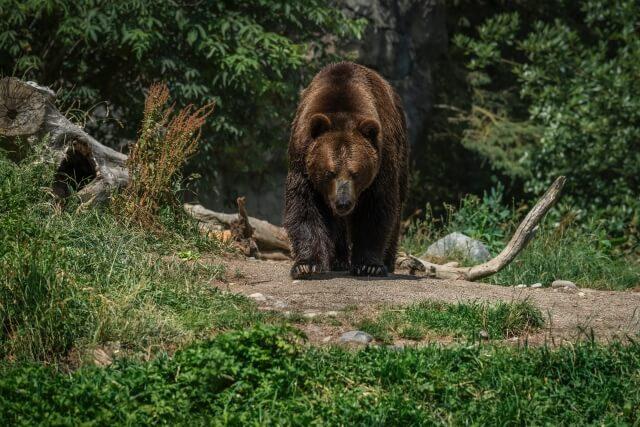
Bear canisters and bear bags
Bear canisters and bear bags are your allies against curious bears. These containers safeguard food and scented items. A canister is a solid fortress; a bag, suspended from a tree, keeps treasures out of reach. Both are powerful spells to protect your campsite. By mastering these tools, you’re a cunning strategist, harmonizing with the wild’s rhythm and safeguarding your resources.
Cooking in Bear Country
Cook away from the tent
Cooking in bear country is like orchestrating a culinary performance where safety takes center stage. It’s essential to cook away from your tent – think of it as preparing a feast in a designated kitchen area. By keeping cooking odors at a distance, you’re like a master chef minimizing the aroma that might attract unwelcome guests.
Set up your cooking station at least 100 yards from your sleeping area, and after the meal, ensure you clean up thoroughly. It’s like leaving a spotless kitchen after a delicious meal. Cooking away from your tent is your secret ingredient – a key step to ensure a bear-free and harmonious camping experience.
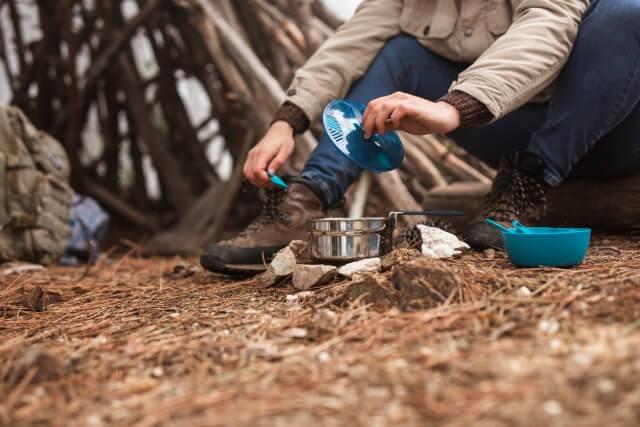
Handle food waste
Properly managing food waste is essential in a bear country. Pack out all scraps and trash, disposing of waste in sealed containers. By handling food waste with care, you contribute to a clean and safe environment for both campers and wildlife.
Group Camping Safety
Advantages of camping in groups
Group camping ensures safety in numbers. There’s a shared responsibility for tasks like bear-proofing and waste management. In case of a bear encounter, a group can react more effectively. Plus, camaraderie adds to the adventure. By camping in groups, you enhance safety while creating memorable experiences together.
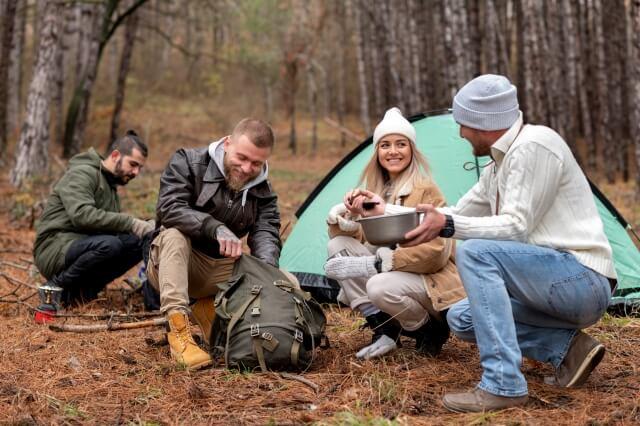
Group guidelines: Establishing safety protocols
Group guidelines establish a framework for safety. Designate a leader and ensure everyone understands bear encounter procedures. Keep noise levels manageable, reducing the chance of surprising wildlife. Sharing responsibilities ensures a well-coordinated camp. By following group guidelines, you create a safer and more organized camping experience for everyone.
Making Noise in Bear Country
Bear bells and human voices: Which is more effective?
When it comes to making noise in bear country, you’re essentially announcing your presence and giving wildlife a heads-up. Both bear bells and human voices can serve this purpose, but human voices tend to be more effective. They’re dynamic, varied, and natural – qualities that animals are more likely to recognize as human activity. It’s like engaging in a conversation that transcends language barriers.
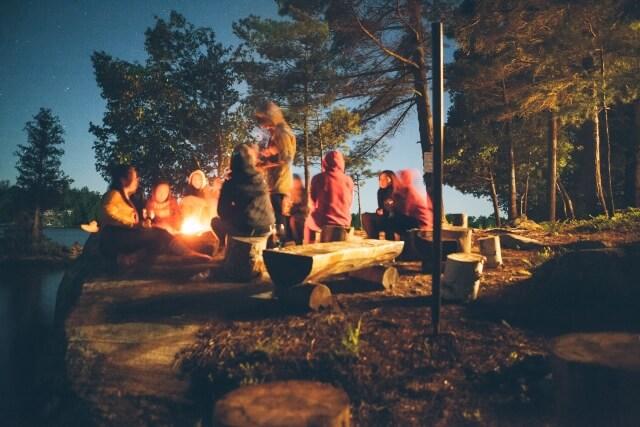
While bear bells have been used by some campers as a precautionary measure, they might not carry the same distinctiveness as human voices. The rhythmic jingle of a bell could blend into the surrounding soundscape, potentially not conveying the urgency that your voice can.
By using your voice to create noise, you actively communicate your presence, allowing bears and other wildlife to perceive you from a distance. This minimizes the chances of startling them and helps prevent sudden and potentially risky encounters. So, whether you’re sharing stories around the campfire or simply chatting as you hike, your voice becomes a powerful tool in the art of bear safety, ensuring a harmonious coexistence in their habitat.
Final Thoughts
As we wrap up our exploration of staying safe while camping in bear country, remember that knowledge is your greatest ally. Equipped with insights into bear behaviors, effective tools like bear spray, and practical tips for campsite management, you’re well-prepared for a remarkable wilderness experience. Your journey through bear country is more than just a camping trip – it’s a chance to connect with nature on a profound level, to appreciate the intricate balance of life in the wild.
By respecting bears’ space and needs, you contribute to their preservation while ensuring your safety. As you embark on your next adventure, tread gently, stay vigilant, and savor every moment of being a guest in their domain. Let your actions reflect the harmony we can achieve when humans and wildlife coexist with respect and understanding.
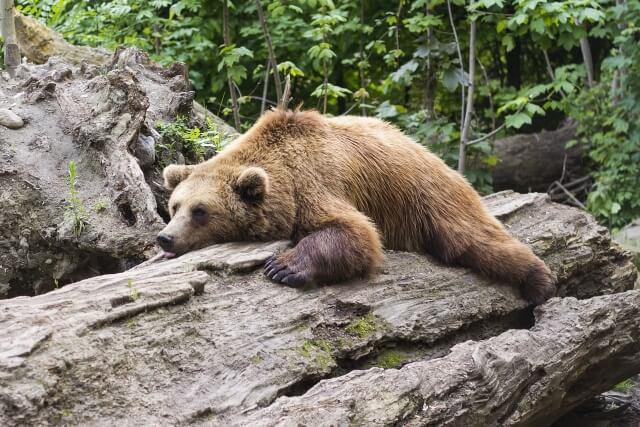
Bear safety is not just a precaution; it’s a testament to our commitment to cherish the beauty of the wild while nurturing a bond that transcends the boundaries between species. So, venture forth, cherish the magic of the wilderness, and let your journey in bear country be a testament to the delicate dance of coexistence that enriches both your soul and the natural world.
FAQs:
What should I do if I see a bear near my campsite?
If you spot a bear near your campsite, stay calm and avoid sudden movements. Slowly back away while facing the bear, creating distance between you and the animal. Speaking in a calm voice can also help alert the bear to your presence. Do not run or turn your back, as this might trigger a chase response. It’s essential to respect the bear’s space and give it room to leave the area naturally.
How far should I keep my food from my sleeping area?
To prevent attracting bears to your sleeping area, store your food and scented items at least 100 yards away from where you’ll be sleeping. This distance minimizes the chances of bears investigating your campsite for food during the night. Use bear canisters or hang your food in bear-resistant bags from a sturdy tree branch to ensure that bears cannot access your supplies.
Are black bears or grizzly bears more dangerous?
Both black bears and grizzly bears are potentially dangerous and should be treated with caution. Grizzly bears are generally larger and more powerful, but black bears can also pose a threat, especially if they feel threatened or provoked. It’s essential to focus on bear behavior and follow safety protocols rather than comparing the two species. Understanding bears’ behavior, knowing how to react in encounters, and taking preventive measures are key to minimizing the risk of danger from either species.

